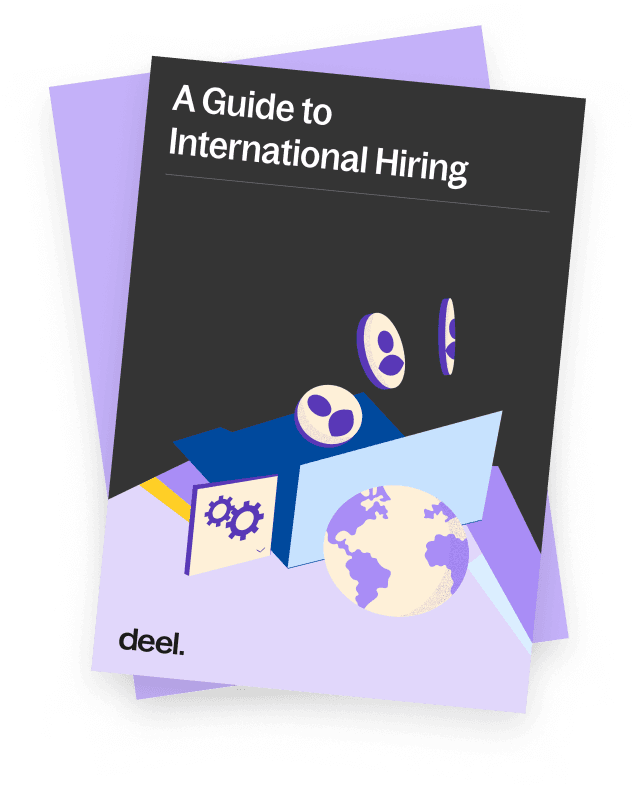Remote Work Glossary
- Results for "undefined"
Table of Contents
How does recruiting software work?
Who uses recruitment software?
Common recruiting software functions
What are the benefits of using recruitment software?
What is recruiting software
Recruiting software is a tool used by hiring teams to manage job applicants and optimize the talent acquisition process.
The terms recruiting software and applicant tracking system (ATS) are often used interchangeably, but they’re not the same. ATS refers to one function (managing job applicants) while recruiting software is an umbrella term covering ATS functions and many others.
How does recruiting software work?
Identifying, assessing, and hiring candidates is a lengthy process for hiring managers and recruiters. The role of recruiting software is to optimize and partially automate the talent acquisition and hiring workflow so organizations can hire the best talent for their team quickly and easily.
Most modern recruiting software solutions follow a cloud-based software-as-a-service (SaaS) model. This model offers subscription-based services that can be accessed online rather than downloaded to your computer.
Who uses recruitment software?
Recruiting software is mainly used by hiring managers, their teams, and other professionals in human resources management. Staffing agencies and recruitment agencies also use recruiting tools to match job seekers with the right employer.
Common recruiting software functions
Not all recruiting software offers the same functionality and automation, but the most common features include:
-
Recruitment marketing systems - This system allows you to create and post job openings on multiple career pages, social media platforms, and job boards at once
-
Candidate sourcing tools - This recruiting software feature identifies passive candidates who fit the criteria for the job opening but haven’t applied
-
Candidate screening and selection tools -Some types of recruiting software use artificial intelligence to screen resumes and identify those that include specific keywords before sending skill assessments or evaluations to qualified candidates
-
Interview software - This function helps hiring managers schedule and conduct phone or video interviews and collect pre-recorded interviews from candidates
-
Applicant tracking system (ATS) - An ATS processes applicant data and monitors where each candidate is in the resume screening, assessment, interview, and hiring process
-
Candidate relationship management (CRM) - A CRM system nurtures the relationship between the candidate and the hiring manager. Using a CRM, hiring teams or recruiting teams can communicate directly with candidates in real-time, typically within an in-app messaging system
-
E-signing and document organization - Using this function, hiring teams can manage and send job offer letters, request e-signatures for digital documents, request and store background check documents, and more
-
Reporting and analytics - This feature generates reports with data you can use to improve your recruitment processes, such as acquisition rates and candidate drop-off rates
-
Blind hiring tools - Blind hiring is a technique that helps reduce bias in the hiring process by eliminating personal information on resumes that could lead to conscious or unconscious discrimination, such as race, gender, or age
What are the benefits of using recruitment software?
Companies use recruitment software to improve the hiring experience for both the candidate and the hiring team.
Streamlines the hiring process
Collecting and reviewing job applications is time-consuming. With recruiting software, you can automate tasks like interview scheduling and background checks and complete resume assessments to find the best candidates in a shorter amount of time. Some platforms also include onboarding features for a smoother new employee experience.
Centralizes candidate information
Cloud-based systems hold all of your candidate information in one place—resumes, contact information, internal notes, and more are stored securely and accessible by hiring managers and other core team members. Most recruiting systems also enable you to create candidate profiles and track where they are in the hiring process or onboarding process.
Improves candidate engagement and communication
Many recruiting solutions use artificial intelligence to provide candidates with pre-set information via messaging chatbots to keep candidates engaged throughout the recruitment process. This feature builds better candidate experiences and reduces your hiring team’s workload. Internal messaging systems also enable hiring teams to communicate within the app and retain a messaging history.
Increases your candidate reach
If your recruiting software includes recruiting marketing systems, you can attract a higher number of qualified candidates by integrating the system with various online job boards. Hiring managers can also embrace global hiring to reach qualified candidates worldwide. Learn more about international hiring through our collection of articles and global hiring resources.
